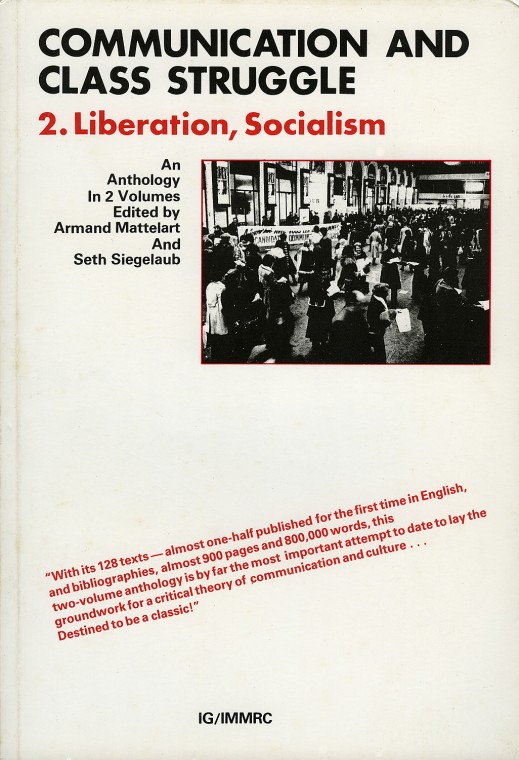Theory, Culture & Society 23(2-3): Problematizing Global Knowledge (2006)
Filed under book, journal | Tags: · aesthetics, archive, assemblage, body, classification, culture, encyclopedia, globalisation, information, knowledge, knowledge production, language, library, life, logic, media, modernity, network, public sphere, race, religion, science, space, technology, theory, time, translation, university, vitalism

In this special issue the TCS editorial board, along with colleagues in East and South-East Asia and other parts of the world, ventured in ‘encyclopaedic explorations’ in order to “rethink knowledge under the impact of globalization and digitization. The issue features over 150 entries and supplements on a range of topics which are addressed in terms of their relevance to knowledge formation, by contributors writing from a wide range of perspectives and different parts of the world. The entries and supplements are gathered under three main headings: metaconcepts, metanarratives and sites and institutions.”
Edited by Mike Featherstone, Couze Venn, Ryan Bishop and John Phillips, with Pal Ahluwalia, Roy Boyne, Beng Huat Chua, John Hutnyk, Scott Lash, Maria Esther Maciel, George Marcus, Aihwa Ong, Roland Robertson, Bryan Turner, Shiv Visvanathan, Shunya Yoshimi
With an Introduction by Mike Featherstone and Couze Venn
Publisher Sage, 2006
616 pages
Armand Mattelart, Seth Siegelaub (eds.): Communication and Class Struggle, 2: Liberation, Socialism (1983)
Filed under book | Tags: · aesthetics, communication, communism, everyday, information, left, life, machine, marxism, mass media, media, political economy, politics, socialism, theory

“Communication and Class Struggle, a two-volume work, is the first general marxist anthology of writings on communication, information and culture. Its purpose is to analyse the relationship between the practice and theory of communication and their development with the context of class struggle. Armand Mattelart and Seth Siegelaub, the editors, have selected more 128 essential marxist and progressive texts originating in over 50 countries and written since the mid-nineteenth century to explain three interrelated phenomena: (1) how basic social, economic and cultural processes condition communication; (2) how bourgeois communication practice and theory have developed as part of the capitalistic mode of production; and (3) how in the struggle against exploitation and oppression, the popular and working classes have developed their own communication practice and theory, liberated mode of communication, culture and daily life.
The second volume provides an analysis of the development of popular and working-class communication and culture, its theory and practice under different political-social and historical conditions, and its contemporary expression. The book contains 64 texts. 38 are published for the first time in English, and some texts appear for the first time in any language. In addition, it includes a 650-entry bibliography.” (from the back cover)
Publisher International General, New York, and International Mass Media Research Center (IMMRC), Bagnolet, 1983
ISBN 0884770192, 9780884770190
438 pages
Review: Dallas W. Smythe (Journal of Communication 1985, p 218ff).
PDF (40 MB, updated to OCR’d version on 2017-10-30 via Memory of the World)
See also Volume 1.
Bernhard Siegert: Cultural Techniques: Grids, Filters, Doors, and Other Articulations of the Real (2015)
Filed under book | Tags: · art, cartography, cultural techniques, cybernetics, information, information theory, machine, media, media theory, ontology, painting, perspective, representation, technology

“In a crucial shift within posthumanistic media studies, Bernhard Siegert dissolves the concept of media into a network of operations that reproduce, displace, process, and reflect the distinctions fundamental for a given culture. Cultural Techniques aims to forget our traditional understanding of media so as to redefine the concept through something more fundamental than the empiricist study of a medium’s individual or collective uses or of its cultural semantics or aesthetics. Rather, Siegert seeks to relocate media and culture on a level where the distinctions between object and performance, matter and form, human and nonhuman, sign and channel, the symbolic and the real are still in the process of becoming. The result is to turn ontology into a domain of all that is meant in German by the word Kultur.
Cultural techniques comprise not only self-referential symbolic practices like reading, writing, counting, or image-making. The analysis of artifacts as cultural techniques emphasizes their ontological status as “in-betweens,” shifting from first-order to second-order techniques, from the technical to the artistic, from object to sign, from the natural to the cultural, from the operational to the representational.
Cultural Techniques ranges from seafaring, drafting, and eating to the production of the sign-signal distinction in old and new media, to the reproduction of anthropological difference, to the study of trompe-l’oeils, grids, registers, and doors. Throughout, Siegert addresses fundamental questions of how ontological distinctions can be replaced by chains of operations that process those alleged ontological distinctions within the ontic.
Grounding posthumanist theory both historically and technically, this book opens up a crucial dialogue between new German media theory and American postcybernetic discourses.”
Translated by Geoffrey Winthrop-Young
Publisher Fordham University Press, New York, 2015
Meaning Systems series
ISBN 0823263762, 9780823263769
xiv+265 pages
Reviews: Geoghegan (Paragraph, 2014), Young (New Media & Society, 2015).
Commentary: Martin (Grey Room, 2016).
PDF (8 MB, updated on 2020-1-1)
Comments (4)
